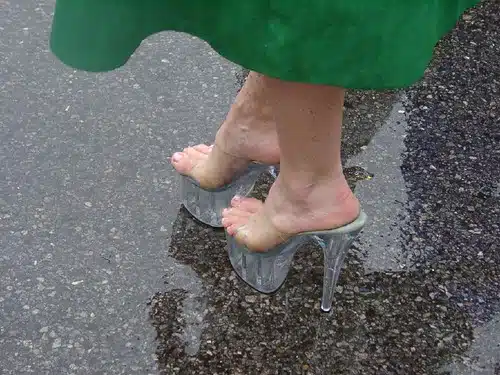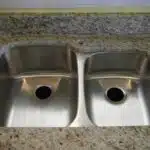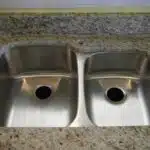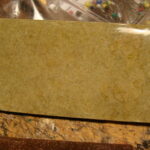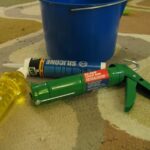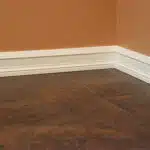Plexiglass is a highly versatile and widely used material due to its transparency, durability, and resistance to breakage. It is commonly used in a variety of settings such as car windows, aquariums, picture frames, and even airplane windows. Its popularity has been increasing over the years as people are looking for more sustainable alternatives to traditional glass. However, like any other material, plexiglass requires proper maintenance and cleaning to maintain its clarity and longevity.
As a plexiglass cleaning expert, I have encountered numerous cases of improper cleaning techniques that have resulted in scratched or cloudy surfaces. Therefore, I am here to guide you through the five easy steps that will help you clean your plexiglass effectively without damaging it. By following these steps, you will be able to maintain the integrity of your plexiglass and prolong its lifespan while enjoying its transparency and aesthetic appeal.
Understanding Plexiglass Properties
To truly understand how to clean plexiglass, it is important to first understand the properties of this versatile material. Plexiglass is a type of acrylic plastic that is lightweight, shatter-resistant, and has excellent optical clarity. It is often used as a substitute for glass due to its durability and versatility.
Identifying suitable applications for plexiglass is crucial in understanding its properties. While it may seem like plexiglass can be used in any situation requiring a transparent surface, it is important to note that it does have some limitations. For example, plexiglass should not be used in high-temperature environments or where it will be exposed to harsh chemicals.
Overall, understanding the properties and limitations of plexiglass is essential when considering its use in any application. By doing so, one can ensure that the material will perform optimally and require minimal maintenance over time. In the following section, we will explore why proper cleaning techniques are important when maintaining plexiglass surfaces.
Why Proper Cleaning Is Important
Proper cleaning of plexiglass is critical to its longevity and functionality. It is essential to maintain the clarity and strength of the material over time. Neglecting proper maintenance can result in scratches, cloudiness, or even damage that may require costly repairs or replacement. Therefore, it is crucial to understand the importance of regular cleaning and maintenance.
Regular cleaning not only removes dirt and debris but also prevents discoloration caused by UV rays. Over time, these harmful rays can break down the polymer chains in the plexiglass, leading to yellowing or browning of the material. By using suitable cleaning techniques for plexiglass, such as a non-abrasive cloth and mild soap solution, you can protect against this discoloration and prolong its lifespan.
In addition to maintaining its appearance, proper cleaning ensures that plexiglass remains functional over time. For instance, if used as a protective barrier in high traffic areas such as hospitals or schools where disinfectants are frequently used, it is essential to remove any residual chemicals on the surface promptly. Regular cleaning will prevent build-up that could affect its effectiveness as a barrier against germs and other contaminants. Thus, by taking care of your plexiglass through proper maintenance, you are ensuring its longevity and functionality for years to come.
Moving forward, now that we understand the importance of maintaining our plexiglass materials properly let’s focus on gathering our cleaning supplies.
Gathering Cleaning Supplies
Before starting the cleaning process, it is essential to gather all necessary cleaning supplies. Choosing cleaning supplies like a microfiber cloth, mild soap or detergent, and warm water are crucial to avoid damage to the plexiglass. It is also essential to avoid using ammonia-based cleaners, paper towels, or abrasive materials as these can cause scratches on the surface of the plexiglass.
Proper storage techniques for cleaning supplies are also important. Keeping them in a cool and dry place will help extend their lifespan and maintain their effectiveness. It is advisable to store cleaning supplies away from direct sunlight or heat sources as this can cause chemical reactions that can be harmful both for the cleaner and the plexiglass.
As a plexiglass cleaning expert, I highly recommend investing in high-quality cleaning supplies that are specifically designed for plexiglass surfaces. By doing so, you can ensure that your plexiglass stays clean and clear for longer periods of time while maintaining its quality. With proper care and maintenance, your plexiglass will look new for years to come.
To start the cleaning process, it is essential to remove any loose debris from the surface of the plexiglass before applying any cleaning solution. This step will prevent further damage caused by debris scratching against the surface during cleaning. Use a soft-bristled brush or a gentle stream of water to remove any dirt or dust particles from the surface gently. Once completed, move on to step 1 of our easy 5-step process: Remove Loose Debris!
Step 1: Remove Loose Debris
To properly clean plexiglass, it’s crucial to follow a series of steps that will ensure the material remains in excellent condition. The first step is removing loose debris from the surface, which can scratch the material if not removed carefully. To do this, you should use a soft-bristled brush or microfiber cloth to gently sweep away any dust or dirt particles.
It’s essential to avoid using abrasive materials when cleaning plexiglass as they can cause scratches and damage. Instead, it’s recommended that you use cleaning agents specifically designed for plexiglass surfaces. These products are formulated to be gentle and safe for use on the material while effectively removing dirt and grime.
When removing loose debris from plexiglass surfaces, make sure you’re thorough in your approach. Take your time and ensure that every nook and cranny is free of dirt and dust particles before moving onto the next step: applying a cleaning solution. Remember that taking care of your plexiglass surfaces requires patience and attention to detail, but it will pay off in the long run with a crystal clear finish that looks great for years to come!
Step 2: Apply A Cleaning Solution
Ah, the joys of cleaning plexiglass! It’s a task that brings so much satisfaction to those who love a good challenge. Now, before we dive into step 2, let me remind you that using just any cleaning solution won’t cut it. You need a plexiglass cleaning solution that is specifically designed for this type of material.
Step 2: Apply a Cleaning Solution
Once you have your plexiglass cleaning solution at hand, it’s time to get started. First, spray the solution onto the surface and let it sit for a few minutes to allow it to penetrate any dirt or grime buildup. Be sure not to use too much of the solution as excess liquid can seep into the edges and cause damage.
If you’re looking for alternative cleaning methods, there are a few options available. For instance, you can mix warm water with dish soap or white vinegar to create a gentle yet effective cleaning solution. However, be cautious when trying out different methods as some may not work well with certain types of plexiglass.
Now that you know how to apply your plexiglass cleaning solution let’s move on to step 3: gently scrub with a soft cloth.
Step 3: Gently Scrub With A Soft Cloth
While cleaning plexiglass, it is essential to use a soft cloth for scrubbing. The reason for this is that hard or abrasive materials can easily scratch or damage the surface of plexiglass. Hence, using a soft cloth will ensure that the cleaning process is not only effective but also gentle on the material.
There are several soft cloth alternatives available in the market that can be used for cleaning plexiglass. These include microfiber cloths, chamois leather, and cheesecloth. However, it is important to note that not all soft cloths are created equal. Therefore, it is advisable to choose a high-quality cloth made specifically for cleaning delicate surfaces like plexiglass.
In addition to using a soft cloth, selecting the right cleaning solution is vital for achieving optimal results when scrubbing plexiglass. The best cleaning solutions for plexiglass are those that are gentle and non-abrasive. Examples of such solutions include mild soap and water, vinegar and water mixture, or specialized commercial cleaners designed explicitly for plexiglass.
Transition into Step 4: Once you have gently scrubbed your plexiglass with a soft cloth and appropriate cleaning solution, the next step is to rinse it thoroughly with water.
Step 4: Rinse Thoroughly With Water
Like a gentle breeze on a hot summer day, the process of cleaning plexiglass should be done with care and precision. Now that you have gently scrubbed your plexiglass surface, it’s time to rinse off any remaining residue. But before you turn on the tap and start splashing water everywhere, there are important considerations to keep in mind.
Water pressure is crucial when rinsing plexiglass. Too much pressure can cause the material to crack or scratch, while too little pressure may not effectively remove all the debris. If you’re using a hose or pressure washer, make sure to adjust the nozzle so that the water comes out in a smooth and controlled stream. Alternatively, if you’re using a bucket of water, use a clean sponge or cloth to gently wipe away any dirt.
Once you’ve thoroughly rinsed off the surface, it’s time to dry your plexiglass. Avoid using paper towels or abrasive materials as they can cause scratches and damage to the surface. Instead, opt for soft microfiber cloths or chamois towels that are specifically designed for cleaning delicate surfaces like plexiglass. Gently pat down the surface until it’s completely dry; if there are any remaining streaks or spots, repeat the drying process until your plexiglass is crystal clear and looking its best!
Step 5: Dry With A Soft Cloth
After cleaning your plexiglass with a gentle soap solution, it’s important to dry it off properly. Drying is a crucial step in preventing streaks and maintaining the clarity of the material. Here are some tips for choosing the right cloth and techniques for drying your plexiglass.
First, avoid using paper towels or rough fabrics like towels or rags as they can scratch the surface of your plexiglass. Instead, choose a soft microfiber cloth that won’t leave lint or scratches on the surface. Make sure the cloth is clean and free from any debris before you start drying.
Second, use a light touch when drying your plexiglass to avoid leaving behind streaks or smudges. Start at one end and work your way across in straight lines, making sure to overlap each pass slightly to ensure complete coverage.
Third, if you notice any remaining water droplets after drying, use a hairdryer set on low heat to gently blow them away. This will prevent water spots from forming on the surface of your plexiglass.
Finally, remember that proper drying techniques are just one part of maintaining your plexiglass. In the next section, we’ll discuss some common cleaning mistakes to avoid so that you can keep your plexiglass looking its best for years to come.
Avoiding Common Cleaning Mistakes
Common cleaning mistakes can lead to damage or scratches on plexiglass surfaces. Avoiding these mistakes is crucial in prolonging the life of your plexiglass and keeping it looking new. One common mistake is using paper towels or rough cloths when cleaning plexiglass. These materials can leave scratches or streaks on the surface, making it appear cloudy.
Another mistake is using harsh chemicals or solvents to clean the surface. These substances can cause the plexiglass to become discolored, brittle, or even crack over time. It’s important to always use mild soap and water when cleaning plexiglass surfaces.
Tips for effective cleaning include using a soft microfiber cloth and gentle circular motions when wiping down the surface. It’s also important to rinse the cloth frequently to prevent any dirt or debris from scratching the surface. By avoiding common cleaning mistakes and following these tips, you can ensure that your plexiglass surfaces remain in pristine condition for years to come.
| Common Cleaning Mistakes | Tips for Effective Cleaning |
|---|---|
| Using paper towels or rough cloths | Use a soft microfiber cloth |
| Using harsh chemicals or solvents | Use mild soap and water |
| Not rinsing cloth frequently | Rinse cloth frequently during use |
| Scrubbing in back-and-forth motions | Use gentle circular motions |
By taking care of your plexiglass through proper cleaning techniques, you can avoid costly repairs or replacements down the line. However, there are times when tough stains may require specialized cleaners. In the next section, we will discuss how to properly use these cleaners without damaging your plexiglass surfaces.
Using Specialized Cleaners For Tough Stains
Specialized cleaners can be a saving grace when it comes to stubborn stains on plexiglass. Sometimes, regular soap and water just won’t cut it, and that’s where these cleaners come in. They are specifically designed to tackle tough stains that regular cleaning products can’t handle.
When it comes to deep cleaning and restoration of plexiglass, specialized cleaners are the way to go. These cleaners penetrate deep into the surface of the plexiglass, removing any dirt or grime that has built up over time. This not only improves the appearance of your plexiglass but also helps prolong its lifespan.
Here are some tips on using specialized cleaners for tough stains:
- Read the instructions carefully before using any specialized cleaner.
- Test the cleaner on a small, inconspicuous area first to make sure it doesn’t cause any damage or discoloration.
- Use a soft cloth or sponge to apply the cleaner in a circular motion, working from one end of the plexiglass to the other.
By following these tips and using specialized cleaners as needed, you can keep your plexiglass looking brand new for years to come. In addition to deep cleaning and restoration, regular maintenance is key in ensuring its longevity.
Maintaining Your Plexiglass Regularly
Maintaining your plexiglass regularly is crucial to prolonging its lifespan and keeping it looking pristine. Preventive measures are key when it comes to long term care. One of the most important things you can do is to avoid using harsh chemicals or abrasive materials that can cause damage.
To keep your plexiglass in top condition, it’s essential to clean it regularly. Use a soft cloth or sponge and a gentle cleaning solution such as mild soap and warm water. Avoid using paper towels or other rough materials that can scratch the surface. After cleaning, be sure to dry the plexiglass thoroughly with a clean cloth to prevent water spots from forming.
Another way to maintain your plexiglass is by protecting it from direct sunlight and extreme temperatures. Over time, exposure to sunlight can cause fading and yellowing, while extreme temperatures can lead to cracking or warping. Consider applying a UV-resistant coating or installing window film to protect against harmful rays. Additionally, if you’re using plexiglass outdoors, make sure it’s properly secured and protected from wind gusts or debris that could cause scratches.
As important as regular cleaning and preventive measures are for maintaining your plexiglass, sometimes accidents happen that result in scratches on the surface. In the next section, we’ll discuss how you can protect your plexiglass from scratches so that you can keep it looking like new for years to come.
Protecting Your Plexiglass From Scratches
Protecting your plexiglass from scratches is crucial to maintain its durability and aesthetic appeal. Even though it is more resistant to shattering than traditional glass, plexiglass can still get scratched easily if not handled with care. To avoid this issue, there are a few techniques that you can use to protect your plexiglass.
One of the most effective ways to protect your plexiglass from scratches is by using protective films. These adhesive films come in different sizes and thicknesses, and they are easy to apply. They create a barrier between the surface of the plexiglass and any object that might scratch it. Additionally, these films are removable, which means you can change them as needed without damaging the plexiglass.
Another technique you can use is polishing. Polishing techniques involve using special compounds or polishes to remove scratches from the surface of the plexiglass. This process requires some skill and experience because applying too much pressure or using the wrong type of polish can cause more harm than good. However, when done correctly, polishing can restore the clarity of your plexiglass and make it look new again.
- Using protective films
- Applying anti-scratch coatings
- Cleaning with microfiber cloths
- Avoiding contact with abrasive materials
- Using proper storage techniques
To keep your plexiglass looking its best, it’s important to take steps to protect it from scratches. By using protective films or polishing techniques, you can prevent damage and maintain its clarity for years to come. Additionally, following simple guidelines like cleaning with microfiber cloths and avoiding abrasive materials will help preserve its quality even further. In the next section, we will discuss how storing plexiglass properly can also increase its lifespan and durability.
Storing Plexiglass Properly
Proper storage of plexiglass is crucial to preventing damage and ensuring its longevity. The first step in proper storage is to ensure that the plexiglass is clean and free from any debris or dirt. This can be achieved by following the steps outlined in the previous section on how to clean plexiglass.
Once the plexiglass is clean, it should be stored vertically, leaning against a wall or other stable surface. This prevents any bending, warping, or cracking that may occur if it were to be stored flat. It’s also important to avoid stacking multiple sheets of plexiglass on top of each other as this can cause scratches or other damage.
In addition to vertical storage, it’s important to keep the plexiglass in a cool, dry place away from direct sunlight and extreme temperatures. Exposure to heat and UV rays can cause yellowing, cloudiness, and other forms of damage over time. By following these simple guidelines for proper storage, you can help prevent damage and ensure that your plexiglass stays in optimal condition for years to come.
To replace damaged plexiglass, it’s important to follow proper removal techniques without causing further damage. This involves carefully removing any screws or bolts holding the damaged piece in place and gently prying it away from its frame. Once removed, measure the dimensions of the damaged piece accurately before ordering a replacement. With proper care and maintenance, replacing damaged plexiglass should be a straightforward process that ensures continued protection and longevity for your valuable assets.
Replacing Damaged Plexiglass
Ah, the joys of owning plexiglass! It’s lightweight, durable, and easy to clean. But what do you do when it gets damaged? Fear not, for I am here to guide you through the process of replacing damaged plexiglass. Whether it’s a small crack or a large hole, don’t panic – repairing plexiglass is easier than you think.
First things first, assess the damage. Is it a small crack or a larger hole? If it’s just a small crack, then you may be able to repair it yourself with a simple DIY kit. However, if the damage is more significant, then it may be time to replace the entire piece of plexiglass.
To replace damaged plexiglass, follow these steps:
- Measure the dimensions of the damaged area
- Purchase a new sheet of plexiglass in the same size and thickness
- Remove the old plexiglass
- Cut the new sheet to size using a saw or scoring tool
- Install the new sheet in place
Preventing Future Damage
Now that your plexiglass is good as new, let’s talk about preventing future damage. One way to protect your plexiglass from scratches and cracks is by applying an acrylic coating or film on its surface. This will provide an extra layer of protection against scratches caused by everyday wear and tear.
Another way to prevent future damage is by practicing proper handling techniques when moving or transporting your plexiglass. Always use two hands when carrying large pieces and lay them flat on a soft surface to avoid any impact damage.
By following these simple tips for repairing cracks and preventing future damage, your plexiglass will continue to shine bright for years to come.
Next up: Frequently Asked Questions (FAQs) about Plexiglass Cleaning
Frequently Asked Questions (Faqs) About Plexiglass Cleaning
Having a clean and clear plexiglass is necessary to keep its aesthetic appeal and functionality. However, there are common misconceptions about how to properly clean it which can cause damages and scratches. As a plexiglass cleaning expert, I recommend following the best practices in cleaning this material.
One of the most common misconceptions about cleaning plexiglass is that using regular household cleaners such as ammonia-based products or abrasive materials like paper towels or sponges won’t harm it. These can actually cause micro-scratches on the surface, making it look cloudy over time. Instead, use a mild soap solution mixed with warm water and a soft microfiber cloth to gently wipe off dirt and grime.
Another best practice is to avoid using any solvents or harsh chemicals that can damage the surface of your plexiglass. This includes alcohol, vinegar, bleach, or any solvent-based cleaners. These substances can dissolve the material’s structure and create cracks or discoloration. Stick to using only recommended cleaning solutions specifically formulated for plexiglass and always read the label before application.
By following these simple steps and understanding the common misconceptions surrounding the proper way to clean plexiglass, you can maintain its clarity and longevity for years to come. Remember that taking care of your plexiglass requires attention and effort but will pay off in the long run by preserving its quality and appearance.
Conclusion
Plexiglass is a versatile and durable material used in various applications, including signage, protective barriers, and display cases. Proper cleaning is essential to maintain its clarity, prevent scratches, and prolong its lifespan. Understanding the properties of plexiglass, selecting appropriate cleaning supplies, and following the right cleaning steps are crucial for effective cleaning.
Loose debris should be removed gently using a soft cloth or brush before applying a cleaning solution. Avoid using abrasive cleaners or harsh chemicals that can damage the surface. Protecting plexiglass from scratches by using microfiber cloths and storing it properly when not in use can further extend its lifespan.
As a plexiglass cleaning expert, I highly recommend taking the time to learn about proper cleaning techniques to preserve the clarity and longevity of your plexiglass products. Always follow manufacturer guidelines for cleaning and maintenance to avoid costly replacements. Remember to store your plexiglass properly in a cool dry place away from direct sunlight. Maintaining your plexiglass with care will ensure it remains clear and beautiful for years to come.
Image Credits
- “Mermaid Parade Girl in Rain – Feet in Plexiglass High Heels” by Whiskeygonebad (featured)

